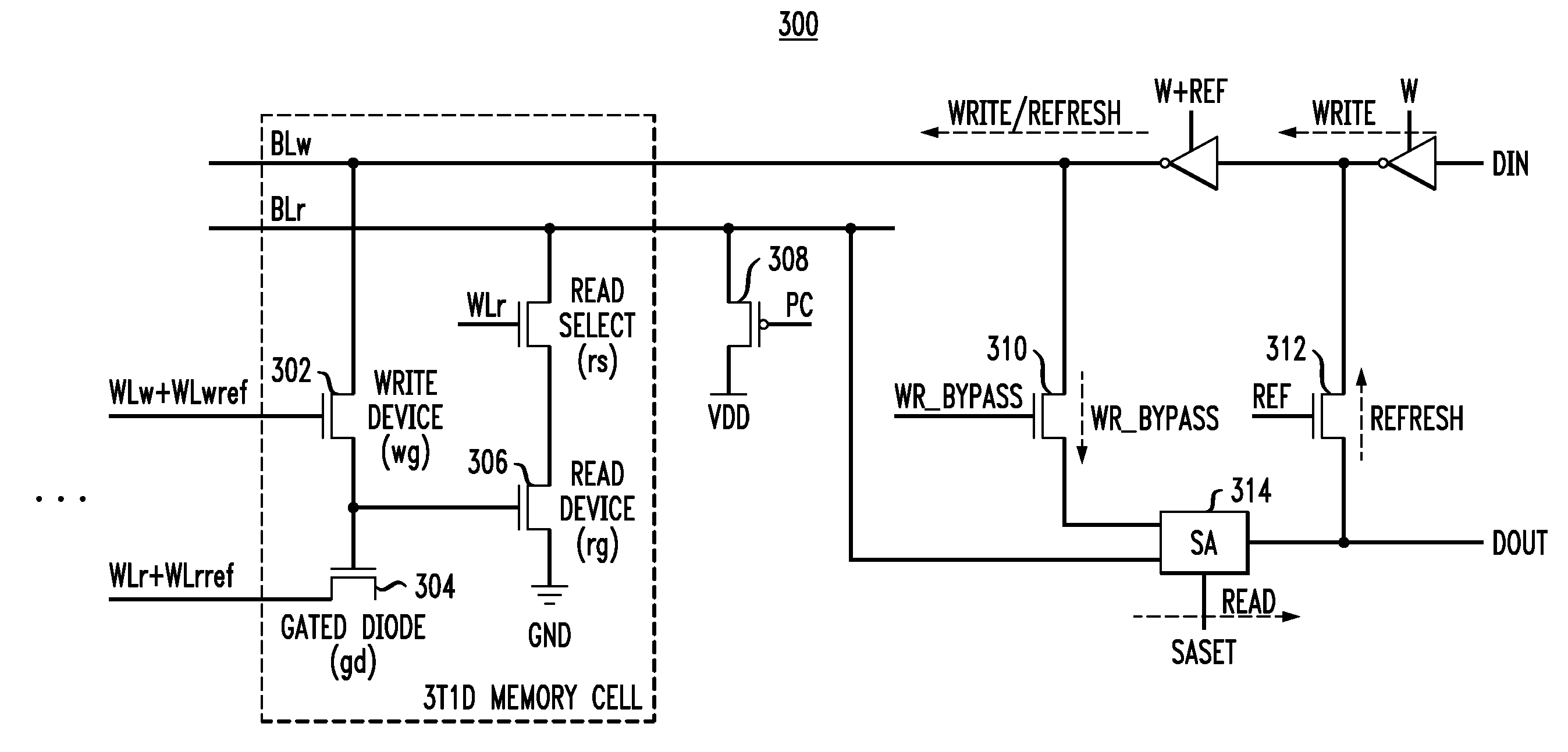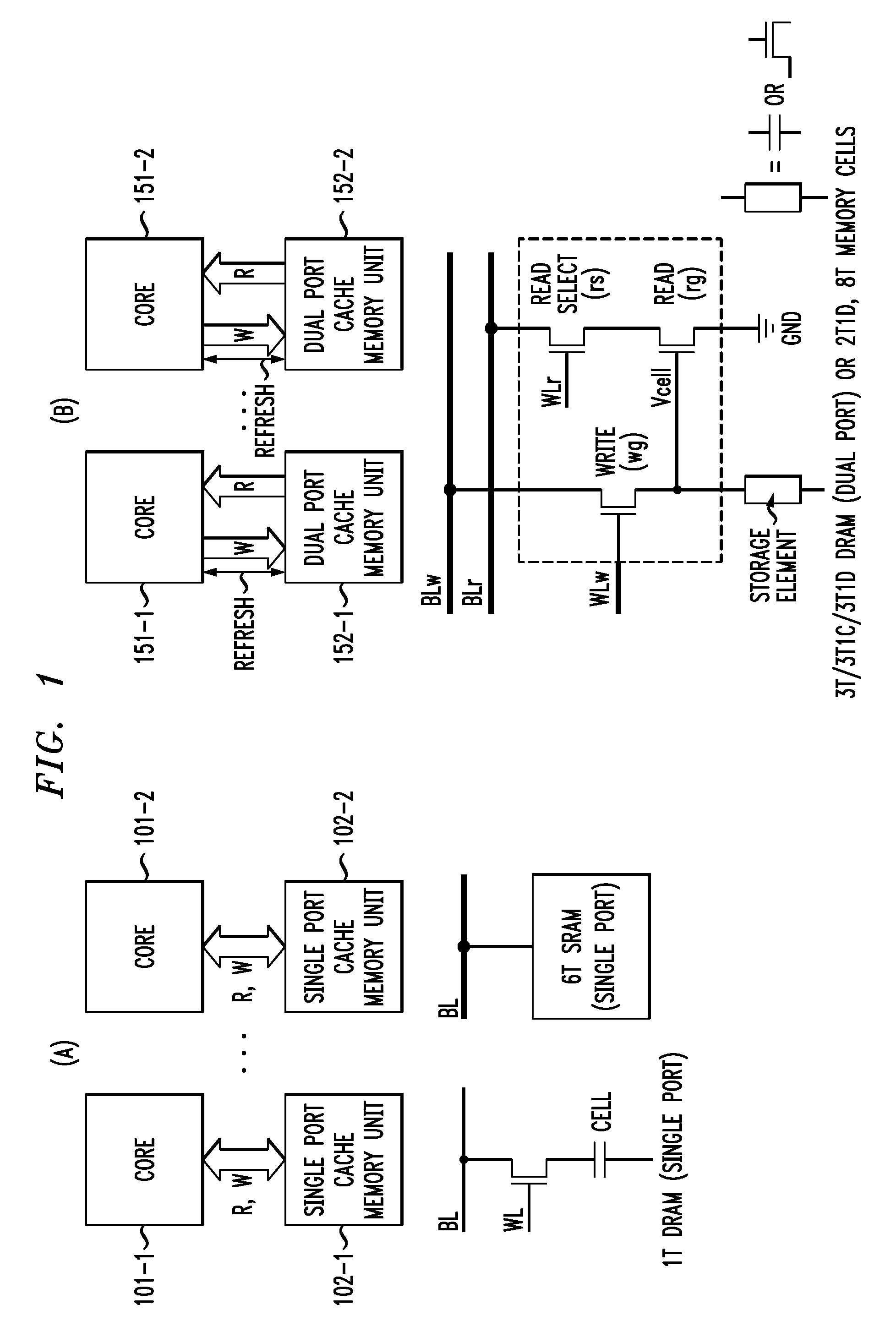Multi-port dynamic memory structures
a dynamic memory and multi-port technology, applied in the field of dynamic memory, can solve the problems of reducing the availability of the memory array for normal read and write operations, reducing the overall system performance, and reducing the availability of the memory array for normal operations
- Summary
- Abstract
- Description
- Claims
- Application Information
AI Technical Summary
Benefits of technology
Problems solved by technology
Method used
Image
Examples
case 1 (read and write scheduling , flow-chart 1300 of fig.13a)
[0063]Case 1 (Read and Write Scheduling, Flow-Chart 1300 of FIG. 13A)
case 1.0
[0064
[0065]If the read address is not the same as the write address (“no” branch of decision block 1302), then the following operations are performed, at block 1306:[0066](1) Activate the wordline WLr to perform a read operation;[0067](2) Activate the wordline WLw to perform a write operation.
case 1.1
[0068
[0069]If the read address is the same as the write address during the current cycle (“yes” branch of decision block 1302), then the following operations are performed, at block 1304:
[0070]the wordline WLr is not activated as there is no read of the stored data. The write-read bypass (WR_BYPASS) FET 408, 508, 608, 708, coupling the write data path and the read data path, is activated to pass the new data for the write operation directly to the sense amplifier 414, 514, 614, 714, without reading from DMC. The new data is then written to the memory array by activating the WLw+WLwref control signal.
[0071]The method of scheduling under the different address conditions for read and write operations is thus summarized in FIG. 13A in the form of flow-chart 1300.
PUM
 Login to View More
Login to View More Abstract
Description
Claims
Application Information
 Login to View More
Login to View More - R&D
- Intellectual Property
- Life Sciences
- Materials
- Tech Scout
- Unparalleled Data Quality
- Higher Quality Content
- 60% Fewer Hallucinations
Browse by: Latest US Patents, China's latest patents, Technical Efficacy Thesaurus, Application Domain, Technology Topic, Popular Technical Reports.
© 2025 PatSnap. All rights reserved.Legal|Privacy policy|Modern Slavery Act Transparency Statement|Sitemap|About US| Contact US: help@patsnap.com



